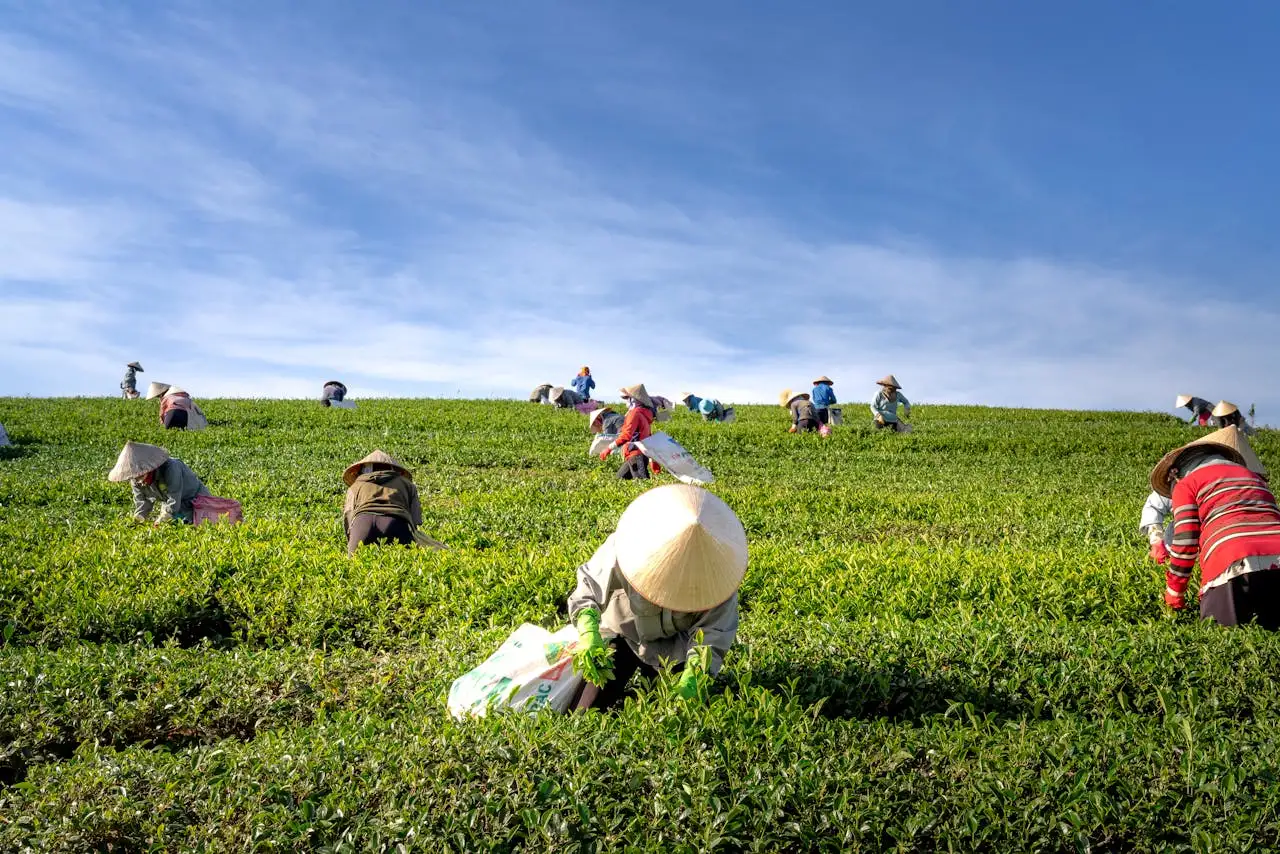 Agro Yield
Agro Yield
09 Jun 2024


10 Jun 2024
Introduction: The New Age of Farming
When most people think of farming, they imagine tractors, barns, dirt roads, and long days in the sun. While those things still exist, farming in the United States has changed a lot. Today, farmers use drones, satellite maps, sensors, mobile apps, and smart machines to grow food more efficiently than ever before.
This transformation is known as “AgTech” — short for agricultural technology — and it’s helping farms grow more crops, waste less, and stay profitable even when times are tough. For investors, that means higher chances of success and better returns.
This article will walk you through how modern technology is making U.S. farms smarter, more productive, and more attractive for people who want to invest in farmland projects. Whether you’re completely new to agriculture or already interested in farm investing with companies like Agro Yield Partners, this guide will help you understand why AgTech is the future.
AgTech simply means the use of technology in farming. This can include:
GPS-guided tractors
Drones that take pictures of crops
Software that tracks weather and soil conditions
Sensors in the ground that detect moisture
Robots that plant, water, or harvest crops
Satellite images that help manage large fields
In the past, a farmer might walk through his field and guess how much water was needed. Today, he can check his phone, look at real-time data, and turn on irrigation with the push of a button.
This shift from old methods to smart systems is changing everything—from planting and harvesting to how money flows into farm projects.
Here are the biggest ways technology helps U.S. farms operate more efficiently and profitably:
Smart sensors placed in the soil can tell exactly when the ground is too dry. This means water is only used when necessary. No more waste. This saves money and also helps the environment.
Fertilizer is expensive. Using too much can harm crops or the environment. Tech tools analyze the soil and give farmers the right amount, only where it’s needed. This lowers costs and improves plant health.
GPS-guided tractors can plant seeds in straight, perfect rows with the exact right spacing. This leads to more crops per acre.
Drones fly over fields and use special cameras to “see” plant problems like disease, pests, or lack of nutrients before a farmer can spot them. Early action leads to higher yields.
Robots or machines now help with weeding, milking, and even harvesting. This reduces the need for hard labor and keeps the farm running smoothly.
All of these changes help one thing: higher production with fewer expenses. That means better profits—and that’s what investors want to see.
Let’s say Agro Yield Partners offers a greenhouse project in Ohio that grows tomatoes.
The greenhouse uses smart lights that adjust based on sunlight.
Water is re-used through a closed-loop irrigation system.
Sensors monitor plant growth and send data to a central computer.
The temperature, humidity, and light levels are all controlled by software.
Harvest robots help pick ripe tomatoes without damaging them.
Because of this, the farm grows 2x more tomatoes per square foot than a traditional outdoor farm, uses 80% less water, and pays fewer workers. That means investors in this project earn solid returns with lower risk.
Agro Yield Partners carefully picks projects that use modern tools. These aren’t just “nice to have”—they reduce risk. Here's how:
Pre-Investment Data: Before a project is listed, satellite images and drone data are used to study the land, weather patterns, soil quality, and crop success rates.
On-Farm Monitoring: Once a project starts, technology tracks every stage—planting, watering, fertilizing, harvesting—and investors can see the updates in their dashboard.
Financial Software: Budgets, expenses, and yields are tracked using farm accounting software. This ensures transparency and keeps your money managed carefully.
Weather Risk Tools: Farms are checked against flood zones, drought patterns, and past weather records using mapping software. This helps avoid risky areas.
With these systems in place, Agro Yield Partners reduces the chance of surprises and gives you better, clearer reporting.
It’s not just about the crops. Technology also changes how you, the investor, experience the farm project.
Instead of waiting for a phone call or email, you can log into your dashboard and see:
Current crop photos
Growth charts
Rainfall reports
Harvest schedules
Project income and expense sheets
You can monitor your projected vs. actual returns, so you always know where your money stands.
All legal documents, project plans, and soil tests are stored online, accessible anytime.
Use in-platform messaging to ask questions or get help, without worrying about spam or delays.
Agro Yield uses modern investor software that’s as smooth and secure as online banking.
Technology doesn’t just make outdoor farms better. It also creates entirely new types of farming.
Crops are grown in greenhouses or warehouses using artificial lights. Temperature and humidity are controlled with software. This allows year-round growing, even during snow or drought.
Plants are stacked in layers (like shelves) and grown with LED lights and water misters. These farms can operate in cities, using very little land.
Why this matters to investors:
More crops per square foot
Higher prices for premium produce (like organic greens)
Less risk from weather problems
Shorter distance to local buyers (lower transport costs)
These types of farms are showing up in places like New York, Chicago, and Los Angeles—and Agro Yield Partners is watching closely for strong projects.
Before you invest in a project, it helps to ask questions like:
Does this farm use any soil or water sensors?
Is the farm using software to manage crops or workers?
How are pests detected and managed—by hand or by tech?
Are harvest amounts tracked with machines or manual logs?
Is the farm’s internet and power setup strong enough for smart tools?
Agro Yield Partners usually includes this information in every project listing. But you can always ask support for more details.
AI is now entering the world of farming. Here's how:
AI models can predict the best time to plant or harvest
Smart tools can spot crop disease before humans can
Self-driving machines can plow, plant, and harvest automatically
AI chatbots help farmers diagnose problems fast
For example, in a recent California farm project, Agro Yield partnered with a grower who used an AI app to predict the best fertilizer timing based on plant stress levels. That farm had 20% higher yield and used 15% less input. The investor return was 11% for the year—above average.
In the past, farm managers might estimate crop amounts or report finances by hand. This left room for mistakes—or even cheating.
Now, drones, blockchain software, and financial tools track everything automatically. Investors know:
What was planted
What was harvested
What was sold
Who was paid
How money was used
That means more trust and fewer problems.
Modern tech isn’t just about money. It also helps protect the environment.
Drip irrigation saves water
Smart tractors use less fuel
Fewer chemicals are needed
Crops are healthier
Waste is lower
Greenhouses reuse energy
And guess what? Buyers pay more for food that’s grown this way. Grocery stores, restaurants, and organic markets often give higher prices for eco-friendly crops.
So by helping the planet, tech also helps your bottom line.
All of this means more confidence for you, the investor.
Years ago, investing in farmland meant buying a tractor, hiring workers, and dealing with weather. Today, it can mean clicking a few buttons and watching your dashboard while a tech-smart farm grows your money.
Agro Yield Partners gives everyday people access to these smart farms across the United States. Whether it’s a high-tech almond orchard in California or a lettuce greenhouse in Texas, every project is backed by modern systems that help reduce waste and raise results.
You don’t have to be a farmer. You just have to believe in real assets, real food, and real innovation.
When machines, data, and human knowledge work together, farming becomes a powerful way to build secure, lasting wealth.
 Your Money
Your Money